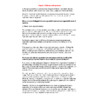|
Top Posters
Since Sunday
|
Comments (0)
|
Explore
Post your homework questions and get free online help from our incredible volunteers
772 People Browsing
Your Opinion
Strange Ingredients Lurking in Doritos Chips
Courses by Biology Forums
Bonobos, Chimpanzees, and the 98% DNA Link
It's sore throat season, why does my mucus have red spots?
The Toxic Skin and Fungi Defense
|
|||||||
| Join Our Community |
|
Biology Forums - Study Force is a free online homework help service catered towards college and high school students. Get homework help and answers to your toughest questions in biology, chemistry, physics, mathematics, engineering, accounting, business, humanities, and more. Master your assignments quickly with thousands of step-by-step solutions to countless textbook questions asked and answered by our members. If we don't have your question, don't worry. You can ask any homework question and get expert homework help in as little as two hours.
Our extensive online study community is made up of college and high school students, teachers, professors, parents and subject enthusiasts who contribute to our vast collection of study resources: textbook solutions, study guides, practice tests, practice problems, lecture notes, equation sheets and more. With our help, your homework will never be the same!
|
|
Biology Forums - Study Force © 2010-2025 | Sitemap Biology-Forums.com is not affiliated with any publisher. Book covers, title and author names appear for reference only. |
|||


